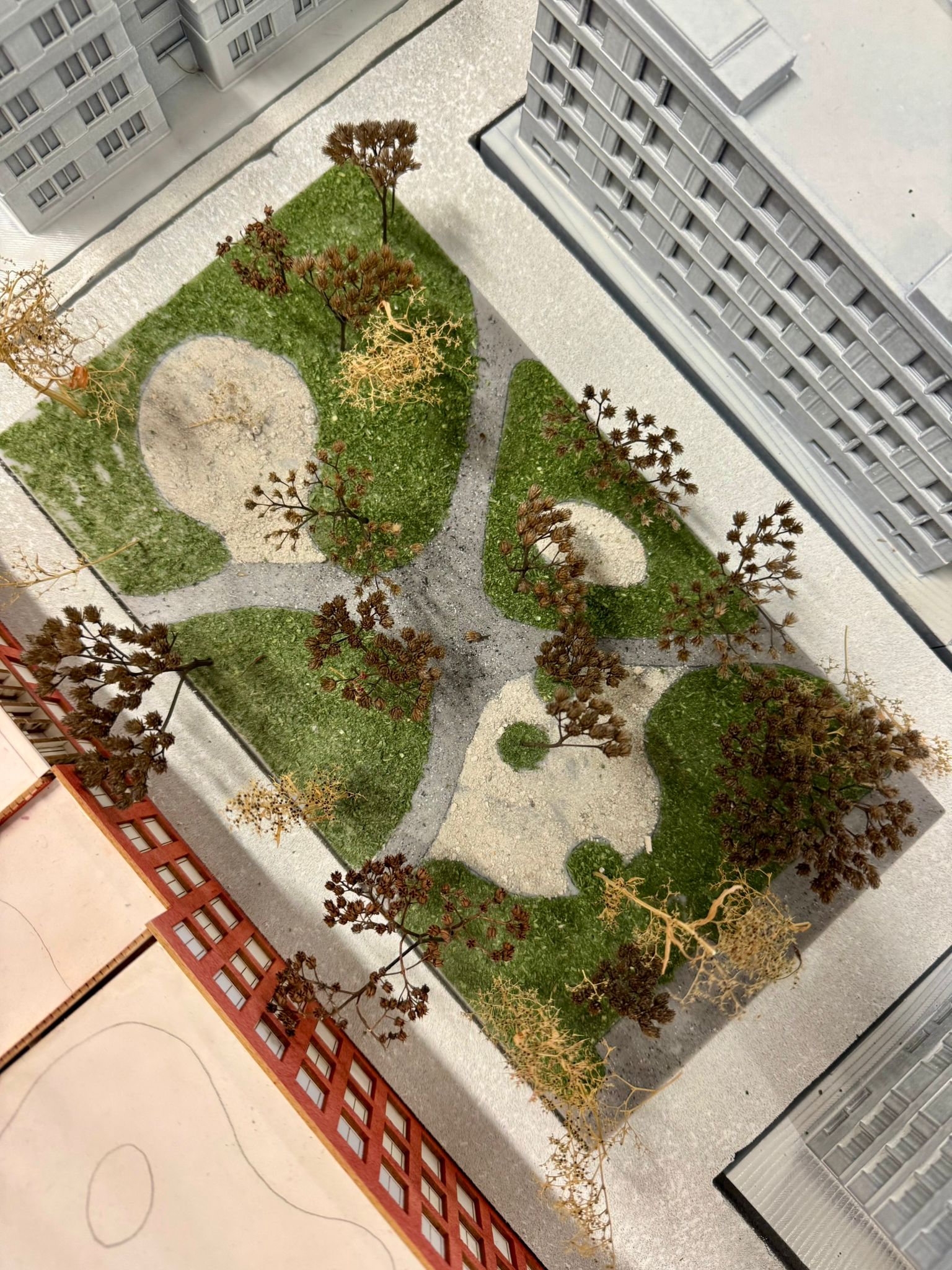What is the future of Pragovka through the eyes of architecture students?
What would Pragovka look like through the eyes of a new generation of architects?
Publikováno
3. 9. 2025
Since August 19, an exhibition of studio projects by students from the Faculty of Architecture at CVUT has been taking place in our space. The exhibition presents student visions for the future of Pragovka. It showcases how the historical character of the site can be harmonized with the needs of contemporary urban life, responding to a broader public debate about the future of Prague’s brownfields.
A total of 53 diverse projects are on display – ranging from designs for residential buildings to conversions of former industrial halls for cultural or community use, as well as urban planning concepts focusing on public space and the landscape along the Rokytka River. A centerpiece of the exhibition is a large-scale model of the area measuring 3.5 × 3.5 meters, where each student presents their individual contribution to the overall vision for transforming the site. As part of the program, a guided tour took place on September 2, attended by architect and urban planner Ing. arch. Pavel Hnilička, head of the studio in which the student projects were developed.
Among all the works presented, several high-quality projects stood out, and we have selected three that particularly caught our eye:
Soňa Števaňáková’s project focuses on the design of student housing, transforming the traditional block structure into an open, vibrant space that encourages interaction between students and the public. The central courtyard serves as the community heart of the building, and special attention was given to the choice of materials – a combination of concrete and wood, referencing Pragovka’s industrial past while maintaining continuity with its surroundings.

The elementary and preschool complex designed by Kateřina Jeřábková and Adéla Kotrbová offers a functional yet playful environment for over 1,000 children. The design emphasizes greenery, community life, and daylight comfort. While the school features a brick façade symbolizing stability and tradition, the kindergarten stands out with wooden cladding. The height of the building gradually lowers towards the southeast to maximize natural light in the interior spaces.

The third project, by Natálie Sorokáčová, focuses on public space within an industrial context, titled 3x3 Public Space. The design combines four types of vegetation and incorporates recycled materials sourced directly from the site – such as paving, metal elements, and concrete slabs. The result is a natural, open environment that serves not only for relaxation and play but also as a venue for community activities across generations.

We would like to thank all the students for their outstanding work!